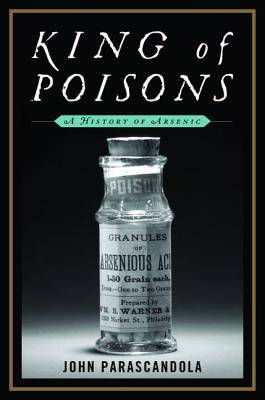
- Afhalen na 1 uur in een winkel met voorraad
- Gratis thuislevering in België vanaf € 30
- Ruim aanbod met 7 miljoen producten
- Afhalen na 1 uur in een winkel met voorraad
- Gratis thuislevering in België vanaf € 30
- Ruim aanbod met 7 miljoen producten
Zoeken
Omschrijving
For centuries arsenic's image as a poison has been inextricably tied to images of foul play. In King of Poisons, John Parascandola examines the surprising history of this deadly element. From Gustave Flaubert to Dorothy Sayers, arsenic has long held a place in the literary realm as an instrument of murder and suicide. It was delightfully used as a source of comedy in the famous play Arsenic and Old Lace. But as Parascandola shows, arsenic has had a number of surprising real-world applications. It was frequently found in such common items as wallpaper, paint, cosmetics, and even candy, and its use in medical treatments was widespread. American ambassador Clare Boothe Luce suffered from exposure to arsenical paint in her study, and Napoleon's death has long been speculated to be the result of accidental or intentional poisoning. But arsenic poisoning is still a public menace. In the neighborhood around American University in Washington, D.C., the army has undertaken a massive cleanup of artillery shells and bottles containing chemical warfare agents such as arsenical lewisite after a number of workmen and residents became ill. Arsenic contamination of the water supply in Bangladesh and in West Bengal, India, is a major public health problem today. From murder to crime fiction, from industrial toxin to chemical warfare, arsenic remains a powerful force in modern life.
Specificaties
Betrokkenen
- Auteur(s):
- Uitgeverij:
Inhoud
- Aantal bladzijden:
- 208
- Taal:
- Engels
Eigenschappen
- Productcode (EAN):
- 9781597977036
- Verschijningsdatum:
- 1/10/2012
- Uitvoering:
- Hardcover
- Formaat:
- Ongenaaid / garenloos gebonden
- Afmetingen:
- 162 mm x 236 mm
- Gewicht:
- 453 g

Alleen bij Standaard Boekhandel
+ 67 punten op je klantenkaart van Standaard Boekhandel
Beoordelingen
We publiceren alleen reviews die voldoen aan de voorwaarden voor reviews. Bekijk onze voorwaarden voor reviews.








